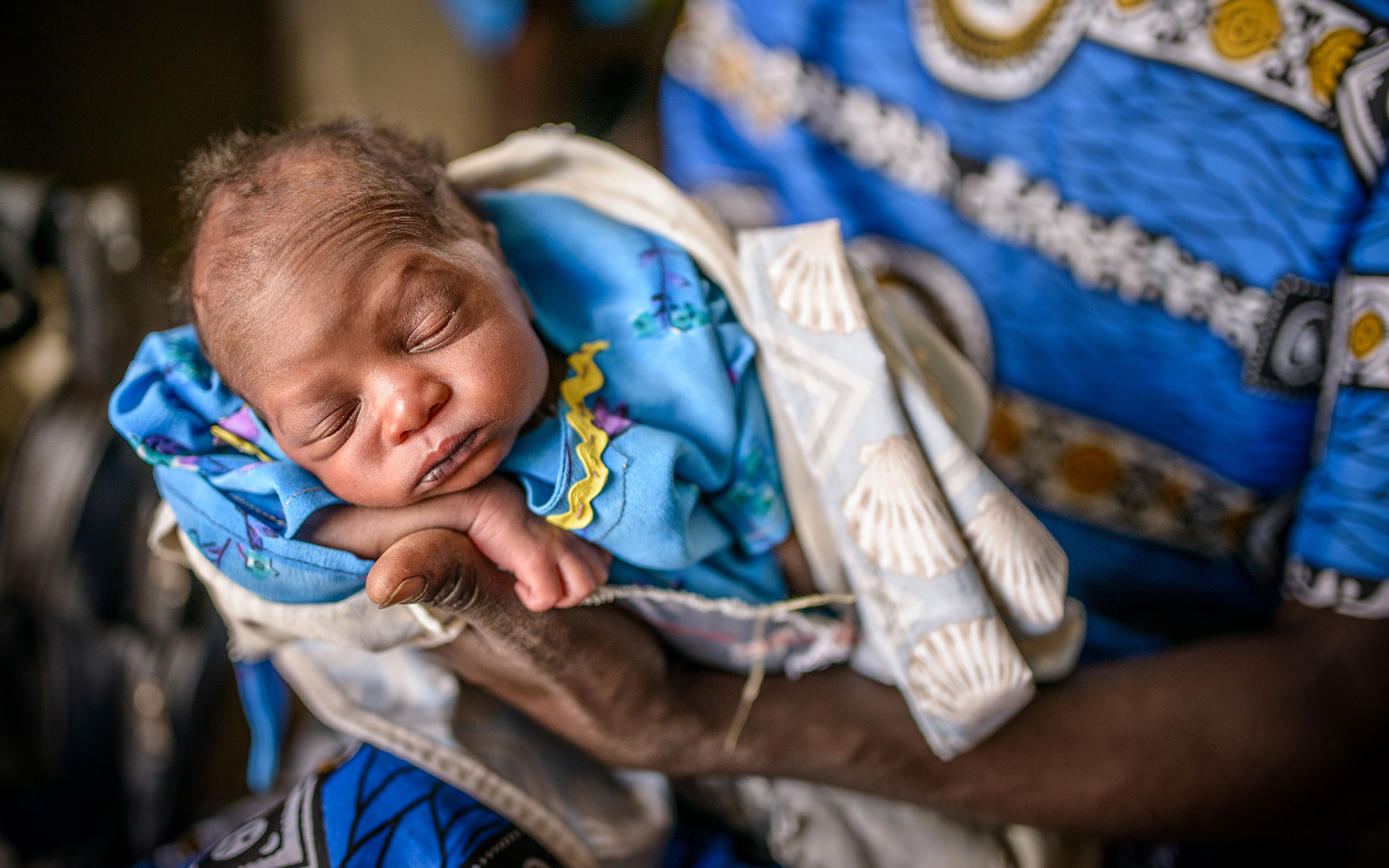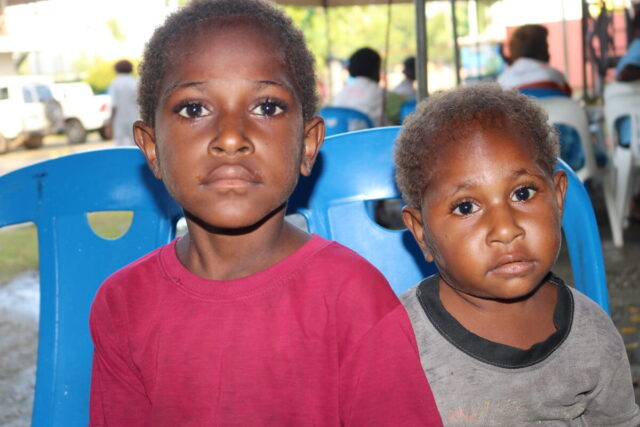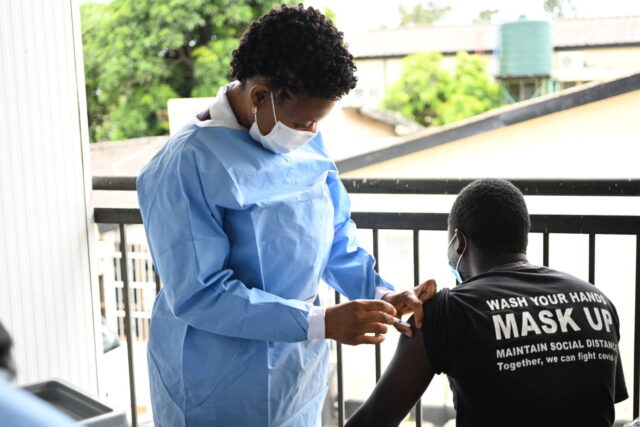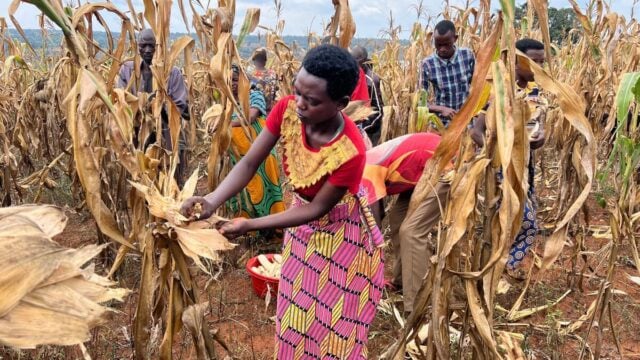As veteran journalist Roger Thurow followed a Kenyan family while reporting on hunger in 2011, he came face to face with the most anguishing aspect of poverty as he watched one mother desperately try to care for her malnourished child.
“From her, I learned the deepest form of misery in the hunger season is being unable to stop the crying of a hungry child,” says Roger, who serves as senior fellow, global food and agriculture, for The Chicago Council on Global Affairs and previously worked as a foreign correspondent for The Wall Street Journal for 30 years.
It made him think about the importance of nutrition in a child’s life — especially while in the womb and during the first years of life. Worldwide, one in every four children is stunted physically, cognitively, or both. How a mother feeds and cares for herself and her child while pregnant and then in their first two years largely determines a child’s long-term development capacity.
This was the inspiration for his newest book, The First 1,000 Days, which follows women in the U.S., India, Guatemala, and Uganda — where he worked with World Vision — during this critical period. We spoke to Roger about his book and why hunger and malnutrition are so important to him.

What made you so interested in the topic of hunger and malnutrition?
The thing that was really galvanizing was the Ethiopian famine of 2003. Looking into the eyes of someone dying of hunger becomes a disease of the soul. Looking at these kids and hearing their stories about how they ended up here became the story that stopped me cold as a foreign correspondent — I was used to going from place to place, country to country, and story to story. This one I said, ‘I have to come back to this; I can’t just write about this and leave and say, “OK, what’s next.”’ It became my journalistic calling. Everything I had done up to that stage prepared me to write about this issue of hunger in the 21st century and the shame, stupidity, and obscenity that we’ve brought this medieval suffering into the 21st century.
My journalistic mantra coming out of all that is outrage and inspire — to outrage readers with these facts about the level of hunger, malnutrition, and stunting that we’re still living with and tolerating and the impact it has and cost it has on all of us; but also the inspiration that this is something we can do and get on top of.
What is that impact of malnutrition on all of us?
One in every four children in the world is stunted. That’s appalling. How have we tolerated this? Stunting is a life sentence of underachievement and underperformance. If they’re stunted, the time they spend in school is less. When they’re in school, their ability to absorb and learn is reduced. This is all rendered by the time a child is 2 years old.
A stunted child anywhere is a stunted child everywhere. That ripples through — the lesser education they receive, the more the diminished capacity they have to learn, so they become stunted adults. Their earnings are lowered. It makes their climb out of poverty harder. It’s a healthcare cost. It’s one less full wage earner. It’s a global impact of a couple trillion dollars of less economic activity — lower production, lower trade, higher healthcare costs. Think about that, and you think, ‘Wow, this impacts all of us.”
What other ways does malnutrition impact us?
Then you have these costs that are incalculable. When you think about that, what might a child have contributed to all of us had they not been stunted? A poem not written, a song not sung, a novel not imagined, a gadget not invented, a building not designed, a mystery not solved, a horizon not explored, an idea not formed, an inspiration not shared, an innovation not nurtured, a cure not discovered, a kindness not done.
A lost chance for greatness for one child then becomes a lost chance for greatness for all of us. That’s a cost that rolls through society. We need to pay attention to that.
These ambitions and aspirations we have for our children unite us in the world and put us all in the same boat — it’s in the 1,000 days that they start to come to fruition or they begin to be dashed.
How are people starting to recognize the impact of the 1,000 days?
The reason for optimism is that this 1,000 days movement is gaining momentum. People are beginning to focus on this issue to raise a clamor to governments. The political will to do something about this is important. In the United States, there are issues of funding for foreign aid and funding nutrition programs — both abroad and at home are critical.
You may say, well does it really affect me? Just look at the security situation. Listen to what people in our military are saying. Mission: Readiness is an organization of hundreds of retired military leaders from all branches. They came out with a report entitled “Too Fat to Fight.” It was something like 70% of Americans between ages 17 and 24 are unfit for service in the military. That becomes a huge security problem for us.
One of the biggest problems cited in the report is malnutrition — which is what overweight and obesity are — and also lack of education, criminal records, and behavioral problems. Military leaders are saying the first 1,000 days are critical for all these things, and those problems have their roots in the first 1,000 days. They are talking about the importance of maternal care, child care, and early education because they know the importance of the security and prosperity for the country.
If this was an issue that was easy for us to put aside or take for granted, it’s not any longer. The interconnectedness of the world continues to grow. Even in the age of individualism, there’s still a growing interconnectedness of people. The global food chain connects all of us, and stunting is detrimental to all of us.
What are three ways anyone can take action and get involved in the 1,000 days movement?
One would be within the family structure of each individual — what are you doing in the 1,000 days for your own family, relatives, or neighbors to ensure that moms and children in your own personal sphere have the best 1,000 days they can, particularly on the nutrition front?
Then broader, realize that this is a problem in our communities. It’s not just a problem ‘over there.’ It’s a problem here. What can I do about it here? What kinds of educational programs are in our schools about the impact of obesity and the whole socioeconomic climate that surrounds these issues? For example, moms are getting the education and learning what foods are important to feed their children, but those gains can be undermined by poverty — so poverty is the trump card. Realize that knowledge is power, but knowledge can also be a burden if you’re unable to put that knowledge into play. How do we make sure in our communities that this knowledge of what needs to happen in the 1,000 days, and the beneficial things that can be done there, is actually able to be put into practice?
On a bigger scale is this advocacy aspect. Support organizations that are active in this realm. But also, it’s election season. When a politician shows up, ask them, ‘What are you doing about this issue? Where are you placing maternal and child health issues? All these child nutrition bills that will come across your desk in the statehouses or Washington — what are you doing about them? It’s important to us, so we think it should be important to you as our politicians as well.’ Write letters. Visit them in person. Support organizations involved in these issues.




